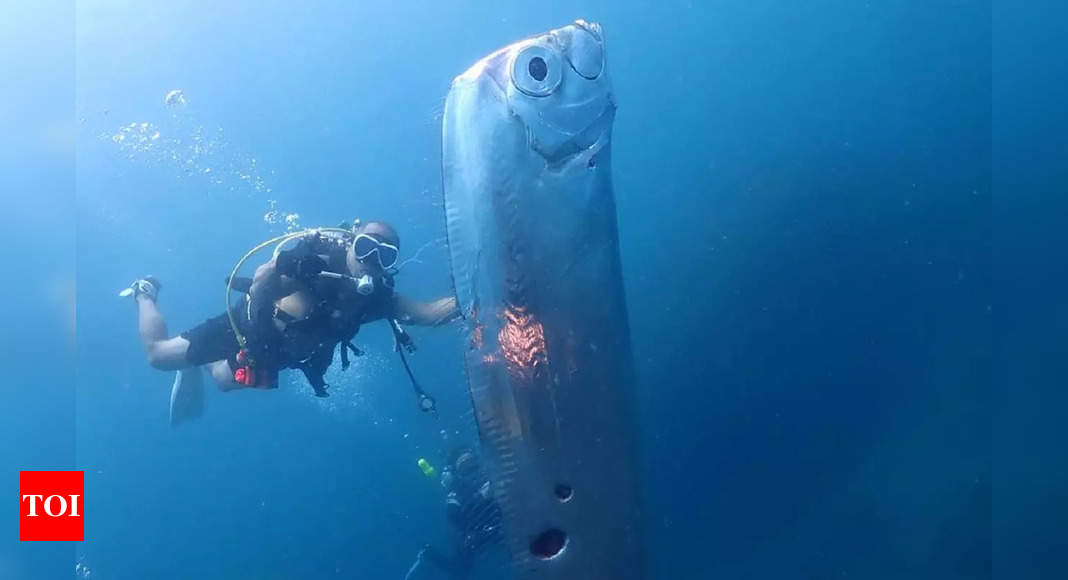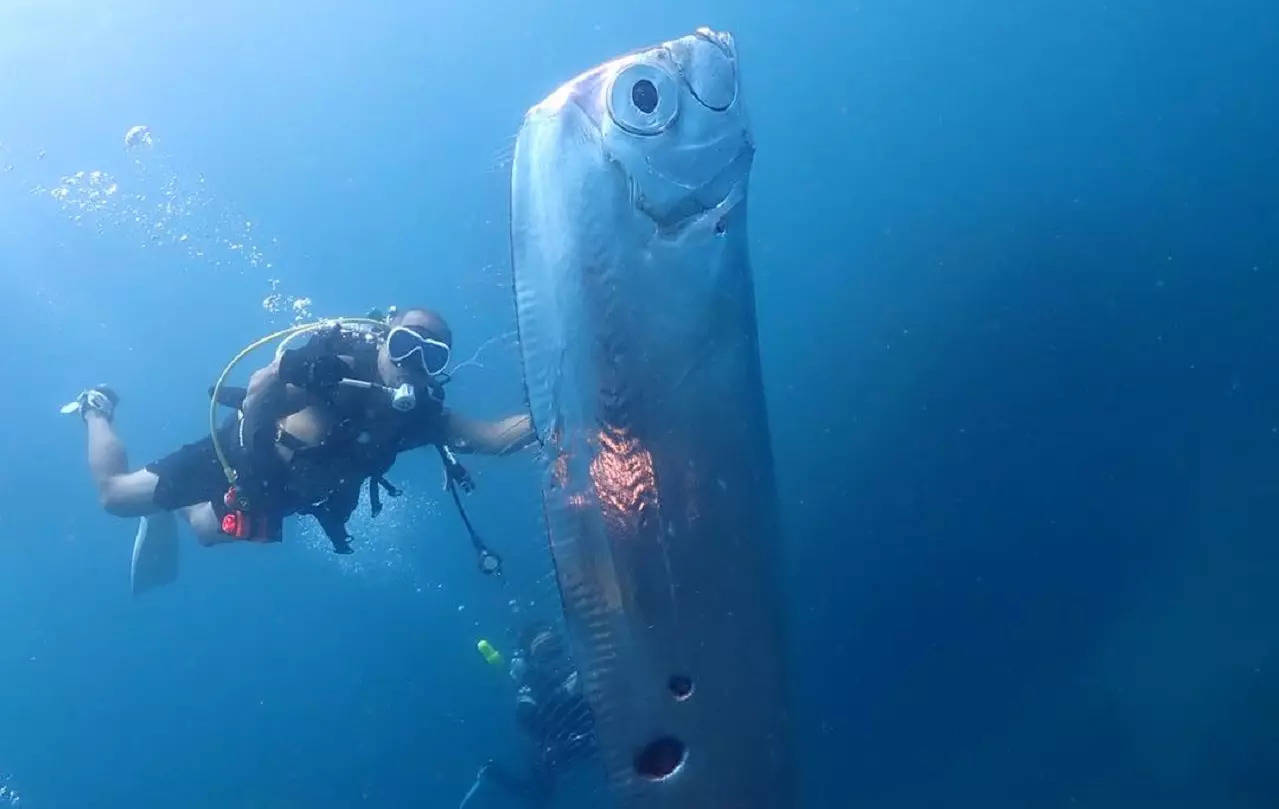According to the Ocean Conservancy, the oarfish is commonly referred to as the “doomsday fish” because it is often sighted during times of disaster.
The unusual find was reported by Lauren Fimbres Wood, spokesperson for the Scripps Institution of Oceanography at the University of California, San Diego, as per reports by the US Today. She detailed how a team of scientists and lifeguards worked to transport the oarfish to a National Oceanic and Atmospheric Administration (NOAA) facility for examination.
Ben Frable, an ichthyologist at Scripps, highlighted the rarity of the event. “Finding an oarfish is incredibly rare,” he said, underscoring the significance of the discovery as only 20 oarfish have washed up in the state since 1901. A necropsy was underway on Friday to determine the cause of death of this mysterious deep-sea inhabitant.
The oarfish’s appearance has stirred echoes of Japanese folklore, where the fish is believed to be an omen of impending disaster. Known as “ryugu no tsukai” or “messenger from the sea god’s palace,” these fish were thought to warn of earthquakes. This belief, which dates back to 17th century Japan, has been fueled by sightings of oarfish before major earthquakes, such as the 2011 Tohoku quake and Fukushima disaster.
However, Hiroyuki Motomura, a professor of ichthyology at Kagoshima University, casts doubt on a direct connection between the fish’s appearance and seismic activity. “I believe these fish tend to rise to the surface when their physical condition deteriorates,” Motomura explained as reported by the US Today. “The connection might be more about their health and less about impending earthquakes.”
Oarfish typically inhabit deep-sea environments, residing between 700 and 3,280 feet below the surface. Their rare appearances near the surface often occur when they are in poor health, making such sightings all the more unusual.
The oarfish found in California will be preserved for further study and added to the Scripps Marine Vertebrate Collection, one of the largest collections of deep-sea fish globally. “Each specimen offers a unique chance to learn more about these enigmatic creatures,” said Fimbres Wood.
As scientists continue to study the oarfish, the blend of myth and science surrounding its appearance remains a captivating aspect of marine lore and research.

